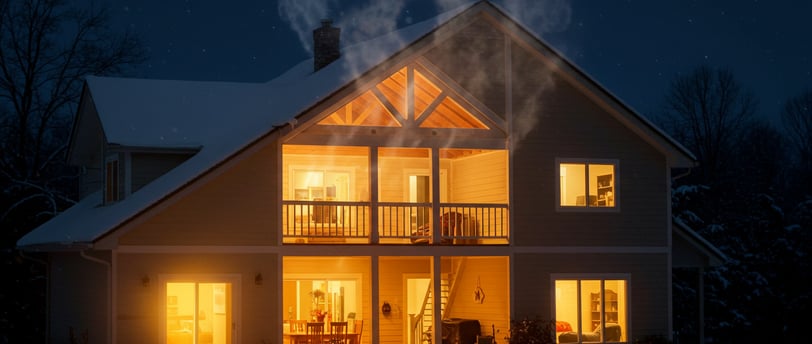Prevent Home Damage: Stop Condensation and Mold with These Simple Tips
Learn how warm air leaks and poor ventilation can lead to hidden moisture damage in your home. Discover practical tips to prevent mold, rot, and costly repairs.
MOLD INSPECTIONOLDER HOMESHEALTH CONCERNS
5/5/20252 min read


Have you ever noticed water droplets forming on the outside of a glass of iced tea on a hot day? This everyday example perfectly illustrates a hidden danger in many homes—how warm, moist air can cause real damage when it moves where it shouldn’t.
The "Iced Tea Effect" in Your Home
On a hot summer day, condensation forms on the outside of a cold glass of iced tea. This happens because the warm, humid air around the glass cools down when it touches the cold surface, and the moisture in the air turns into water droplets.
The same principle applies inside your home—but the consequences can be far more serious. When warm air leaks through your home’s air barrier (like ceilings or walls), it carries moisture with it. If that air reaches a cooler area—such as an attic in winter—it can condense on cold surfaces, just like the iced tea glass.
Hidden Condensation and Its Effects
A common scenario is warm air from upper floors escaping into a cold attic. When the moisture in that air hits the chilly underside of the roof deck—especially on the northern side where the sun doesn’t warm it—it condenses. Over time, this can lead to mildew, mold growth, and even dripping water. Homeowners often mistake this for a roof leak when it's actually a ventilation or insulation problem.
Ventilation Matters—A Lot
Unfortunately, many homes make moisture problems worse through poor ventilation design. Kitchens and bathrooms are often not vented properly to the outside. Instead, fans exhaust moist air into attics or crawl spaces, compounding the issue. In some cases, the exhaust fans are underpowered, or the ductwork leaks or becomes restricted, leaving even more moisture trapped inside the home.
The Risks of Ignoring Moisture
Moisture isn't just a comfort issue—it’s a durability issue. Over time, trapped moisture can rot wood framing, corrode metal fasteners, and compromise insulation performance. Mold and mildew are not just unpleasant; they can also be serious health hazards.
Preventing Moisture Damage
To protect your home:
Seal air leaks around windows, doors, attics, and crawl spaces.
Vent all exhaust fans to the exterior of the home—not into attics or walls.
Use proper insulation and vapor barriers to control temperature and moisture flow.
Inspect ventilation systems regularly to ensure they are functioning properly.
Understanding how air and moisture interact can help you prevent hidden damage and extend the life of your home.
Quantum Scope Inspections
Your Home’s Health, Our Top Priority
get the Home Seller's Handbook, 2025 Edition
Maximize your investment with repairs and maintenance, on Amazon.
© Quantum Scope Inspections 2025 | All Rights Reserved | Privacy Policy
Website Design by Creative Web Design Lab
